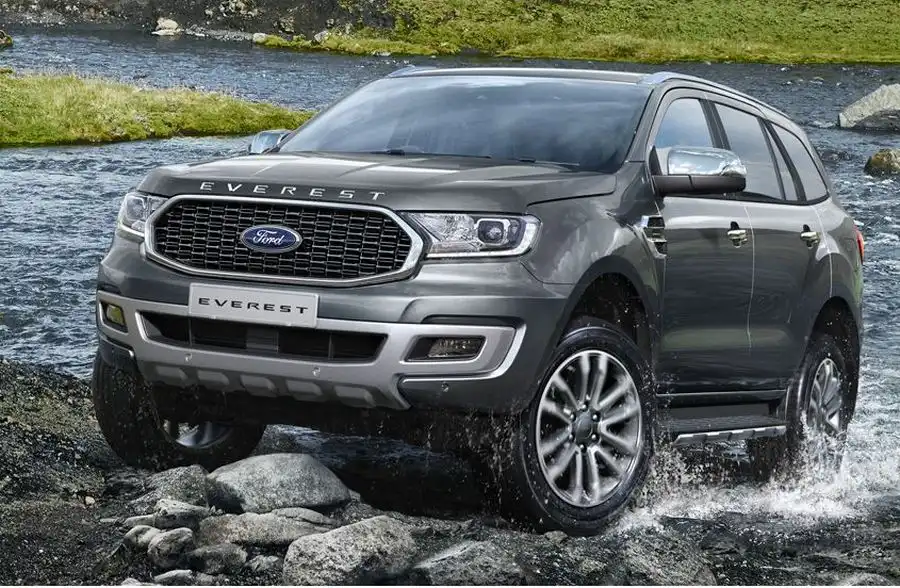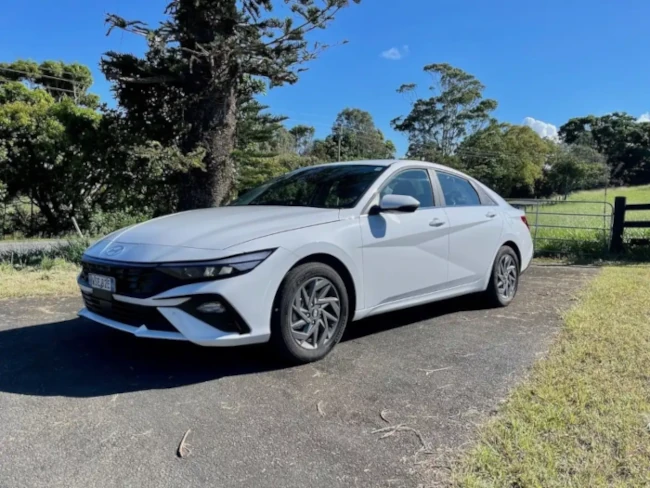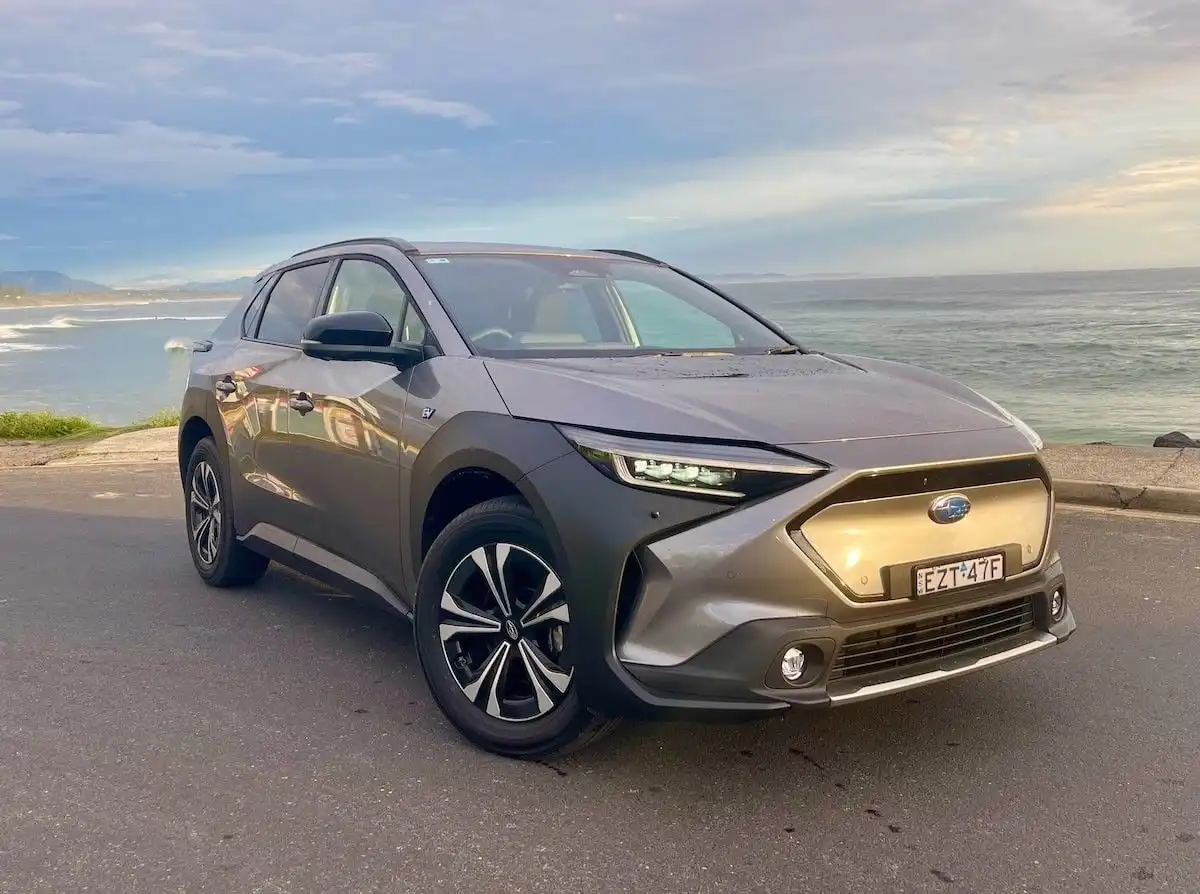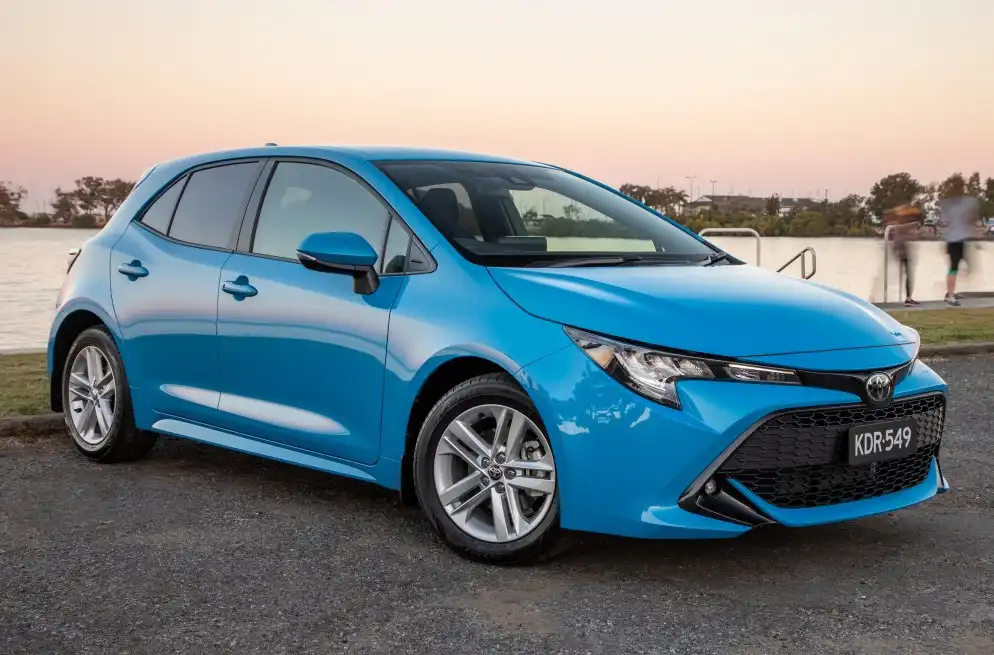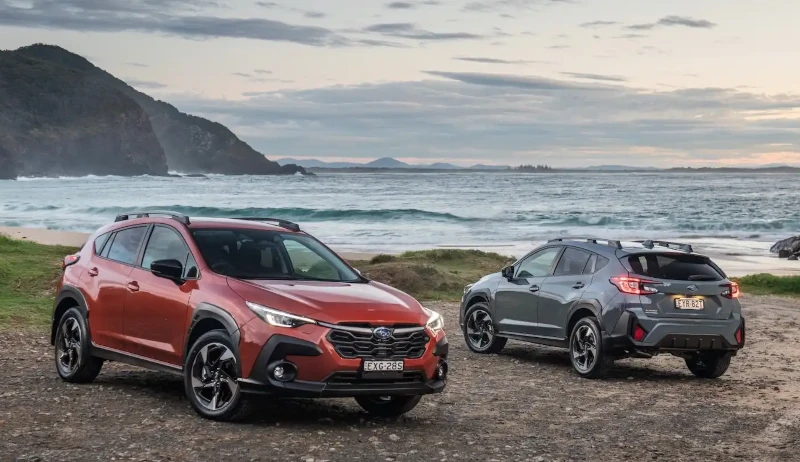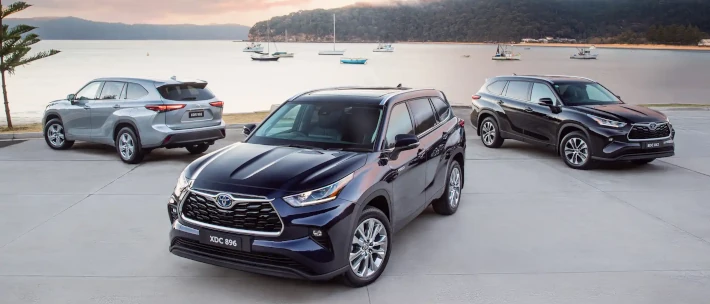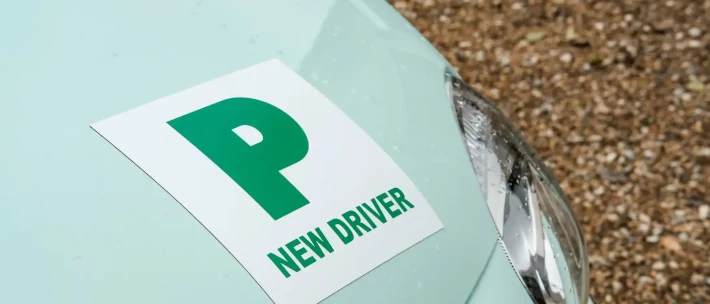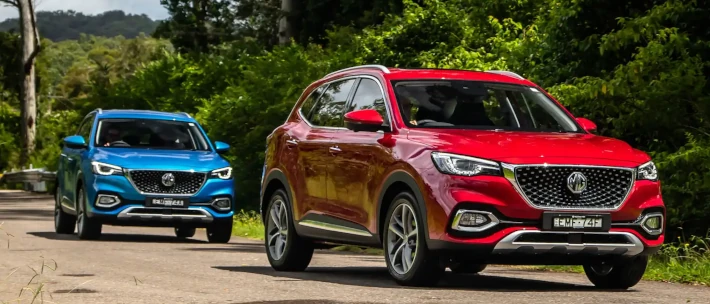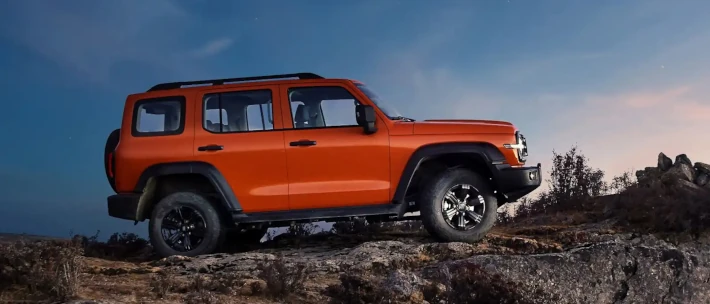With the latest generation Everest, Ford has introduced a brand new styling package, updated the engine lineup, and added a new set of features and equipment which make it a very attractive offering within the ever-competitive world of large SUVs.
Join us as we take a closer look at the latest-generation Ford Everest and see how it performs for large Australian families and against its rivals within the large SUV segment.
Starting Price: $53,290
OnlineAuto Savings: Enquire now
Ford Everest - TREND (4x4) Specifications
| Model Date | 2023 |
| Make | FORD |
| Model | EVEREST |
| Series | UB MY22 |
| Variant | TREND (4x4) |
| Body | 4D WAGON |
| Fuel type | DIESEL |
| Transmission | 10 SP AUTOMATIC |
| Drive | 4WD |
| Engine | BTCDI |
| Engine capacity | 1996 |
| Engine configuration | DUAL OVERHEAD CAM / 16 valves |
| Engine RPM | 3750 / 1750 |
| Cylinders | BTD4 |
| Torque | 500 |
| KW | 154 |
| Fuel tank size | 80.0 |
| Fuel usage specs | 8.2 / 0 |
| CO2 | 190 |
| ANCAP security rating | 5 |
For more details and other variants, check Ford Everest car page.
Need help narrowing down your choices?
Get in touch with one of our Car Buying Specialists today
Request a quoteHow Much Does It Cost?
The Ford Everest range kicks off from $53,290 for the entry-level Ambiente 4x2, while the Ambiente 4x4 variant is priced at $58,290.
Stepping up the range to the Everest Trend 4x2 brings the price to $60,590, while the Trend 4x4 is priced at $65,590. Ford’s Everest Sport 4x2 is priced at $62,790 while the Sport 4x4 is priced at $69,590, and prices for the range-topping Everest Platinum 4x4 stand at $77,530.
How Much Can OnlineAuto Save You?
Using OnlineAuto’s car purchasing service, one of our car specialists can help you save and find the best value model for you.
What Features Does the Ford Everest Have?
Ford’s entry-level Everest Ambiente comes riding on a set of 17-inch alloys and receives LED head and tail lights, cloth upholstery, keyless entry & start, rear-view camera with front & rear parking sensors, side steps, a locking differential for 4x4 variants, dual-zone climate control, wireless smartphone charging, an 8.0-inch digital instrument cluster and a 10.1-inch infotainment system with Apple CarPlay & Android Auto which is paired with an eight-speaker sound system.
Stepping up to the Everest Trend adds a set of 18-inch alloys, a seven-seat interior with leather upholstery, a powered boot lift, a leather-wrapped steering wheel, off-road display, and an upgraded 12-inch infotainment system.
The Everest Sport comes riding on a set of 20-inch black alloys and receives black exterior styling upgrades, heated and ventilated front seats, 3D bonnet logos, special leather upholstery and colours as well as a 10-speaker sound system.
Finally, the range-topping Everest Platinum comes riding on 21-inch alloys and gains a set of Matrix LED headlights, a dual-panel sunroof, a surround-view camera, quilted leather upholstery, a heated steering wheel, heated rear seats, ambient lighting and an upgraded 12.4-inch infotainment system paired with a B&O sound system.
Range Features:
-
17-inch alloys
-
LED head & tail lights
-
Locking differential (4x4 variants only)
-
Cloth upholstery
-
8.0-inch digital instrument cluster
-
10.1-inch infotainment system with Apple CarPlay & Android Auto
-
18-inch alloys (Trend)
-
Seven-seat interior with leather upholstery (Trend)
-
Off-road display (Trend)
-
12-inch infotainment system (Trend)
-
20-inch alloys (Sport)
-
Heated & ventilated front seats (Sport)
-
10-speaker sound system (Sport)
-
21-inch alloys (Platinum)
-
Matrix LED headlights (Platinum)
-
Surround-view camera (Platinum)
-
Quilted leather upholstery with heated rear seats (Platinum)
Ford Everest Colours
The Ford Everest range is available in a choice of seven colours, with Arctic White, Meteor Grey, Sedona Orange, Aluminium, Shadow Black and Equinox Bronze available across the lineup, while Blue Lightning is reserved for the Everest Sport only.
Is it Comfortable to Drive?
A key design brief for the latest Everest is ensuring it is a capable off-roader while remaining approachable enough for everyday driving around town.
In that regard, Ford has done a great job in designing a tough yet comfortable platform that remains user-friendly during day-to-day driving and long-distance road trips.
Power comes supplied by a choice of a 2.0-litre bi-turbo four-cylinder diesel producing 154kW of power and 500Nm of torque and a 3.0-litre V6 turbo-diesel kicking up 184kW of power and 600Nm of torque, both of which throw power to a ten-speed automatic transmission.
The smaller engine is available with a part-time four-wheel-drive system while the V6 turbo-diesel receives a full-time four-wheel-drive system.
In spite of its size, the Everest is surprisingly refined and easy to drive around town thanks to its lightweight steering rack and soft suspension setup that eats up the bumps of Australian roads, while the ride quality does suffer as you step up to the 21-inch wheels fitted to the Platinum.
All up, though, Ford has done remarkably well in creating a comfortable and versatile platform that is user-friendly around town and makes for a great all-rounder-type vehicle.
Is the Ford Everest Good for Off-Road Driving and Towing?
4x4 Everest variants come fitted with a locking rear differential and a full-time 4x4 system with a two-speed transfer case, giving it all the important mechanical hardware for a capable off-roader.
While the platform’s off-road abilities are slightly hampered by its extended wheelbase, both powertrains available offer up a generous heaping of torque to push you over rough terrain, while the capable suspension can handle some serious punishment.
Approach and departure angles for the Everest stand at 30.4 and 25.3 degrees respectively, with the ramp-over figure standing at 22.2, marking improvements across the board over the previous Everest.
While it might not lead the pack in terms of off-road abilities, the Everest platform is a strong performer.
In terms of towing power, Ford says the latest Everest’s braked towing capacity is rated up to 3500kg across the range, while the payload figures stand at 741kg. The Ford Everest’s gross vehicle mass (GVM) stands at 3150kg, while the gross combined mass (GCM) is an impressive 6250kg.
Is it Practical and Spacious?
The Everest’s redesign has allowed Ford to get creative with its interior packaging designs, and the end result makes it a heavy-hitter when it comes to interior space and practicality.
In the front of the cabin, the driver and front passenger have access to a heap of storage options, including a pair of glove boxes, a large storage tray behind the gear lever with a wireless charger, a pair of cup holders, storage inside the large folding armrest and a pair of cupholders on either side of the cabin.
All up, the front cabin is spacious and comfortable for even the tallest of drivers thanks to the adjustable driving position, while there’s a heap of headroom that make the Everest feel both large and purpose-built for Australian families.
In a seven-seat layout, the second row of the Everest gives adult passengers a decent amount of legroom, with no issues in terms of headroom that make it perfectly suited for children. The second row gains a pair of USB chargers and air vents, as well as inbuilt ISOFIX anchors with top tether mounts.
Move to the third row of the cabin and there’s just enough space for an adult to sit for short journeys, giving any children in the rearmost of the cabin enough space and headroom.
In terms of boot space, the Everest offers 259L of cargo storage in seven-seat form, which expands to 898L when you fold down the third row, and sits at a maximum of 1823L with both rows folded.
Is it Safe?
The Ford Ranger has received ANCAP’s maximum five-star safety rating, scoring 86% for adult protection, 93% for child protection, 74% for pedestrian protection and 86% for its safety assist technologies.
As standard, all Everest variants come fitted with forward and reverse autonomous emergency braking, lane-keep assistance, lane departure warnings, adaptive cruise control, blind-spot monitoring, a rear-view camera with front & rear parking sensors and nine airbags around the cabin.
Is it Fuel Efficient?
Considering its size, fuel economy figures in the latest Ford Everest aren’t too shabby thanks to its updated range of turbo-diesel engines.
The base 2.0-litre bi-turbo four-cylinder is rated at 7.1L/100km for the 4x2 and 7.2L/100km for the 4x4 on a combined cycle, while the more powerful engine is rated at 8.5L/100km on a combined cycle, making it relatively fuel-efficient for a vehicle of its size.
Our Verdict: Is the Ford Everest Worth it?
Ford’s latest generation Everest is a very strong performer within the large SUV segment, with the company’s upgrades making it a more compelling offering than ever before.
The Everest ticks all the important boxes for large families, and offers a comfortable day-to-day driving experience that is complemented by genuine off-road abilities that add to the versatility of the package.
As a result, we can’t help but recommend that you add it to your shortlist if you’re tossing up your options within the large, seven-seat SUV segment. On that note, if you’re in the market for a new car, you can get a free quote and see how much OnlineAuto can save you on your next car, or call us on 1300 719 925
Five Specs You Need to Know
-
Five-year, unlimited KM warranty
-
Bi-turbo four-cylinder and six-cylinder turbo-diesel engines are available
-
Five-star ANCAP safety rating
-
259 - 898L of boot space
-
Fuel economy between 7.1 - 8.5L/100km
Pros
-
Comfortable and versatile package around town and off-road
-
Upgraded interior packaging is extremely practical
-
Turbo-diesel engines are smooth and powerful
Cons
-
Ride quality suffers with larger 21-inch alloys
-
Off-road abilities don’t lead the pack
OnlineAuto Rating: 8/10
Ford Everest Competition
Ford Everest |
VS |
Toyota LandCruiser Prado |
| Isuzu MU-X | ||
| Mitsubishi Pajero Sport | ||
| Toyota Fortuner |
